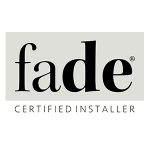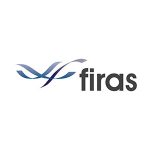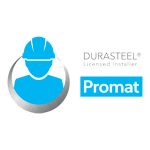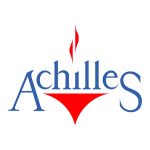our services
At WRR-UK we are proud to be able to offer a vast array of specialist services developed and enhanced through years of experience working in some of the most challenging projects around the UK.
Our services
Often overlooked in construction, it is vitally important that all seals around service penetrations and gaps due to poor workmanship are treated to ensure the effective performance of the overall system, be it a compartment wall or fire resisting floor or ceiling.
In order to obtain effective compartmentation, it is important to consider the passage of cold smoke or toxic gases early on in a fire, or for example the reaction to a service such as a plastic pipe as it penetrates a compartment fire line.
There are numerous tested solutions available in todays market that not only consider the passage of fire, but also in maintaining the acoustic line or movement expected in today’s buildings.
The importance of choosing the correct system and then ensuring the installation is fully compliant and in line with how the system was tested cannot be emphasised enough. This is a sector where WRR having a proven track record of excelling.
There are predominantly three forms of fire protection currently employed by the UK construction industry to insulate and ultimately stop the steelwork from reaching its limiting structural failure temperature:
- Intumescent Paint,
Reliant on the reaction at low temperature of generally Graphite based substance which expand to form an insulative char.
- Fire Boarding,
Recent advances in Calcium Silicate, Magnesium Oxide and Gypsum based products generally mean steels can be protected using relatively thin solutions which also avoid the need to dryline.
- Cementitious spray.
A system which lends itself perfectly to refurbishment projects and is widely renowned as one of the most cost-effective forms of fire protection.
Each of the three fire protection systems used offer different features and benefits so adapting the right approach and selecting the most suitable method for the project and its requirements is key.
WRR’s technical specialists will take on board the specification, as well as the greater scope of the project to ensure that not only is the project requirements adhered to, but that our experienced project managers will be able to adapt and develop bespoke solutions to meet the client’s needs where required throughout the build.
Concrete is used in an array of construction projects and whether it is a concrete slab or steel and concrete composite slab, dependent on the construction it will have an inherent amount of fire resistance.
In specific applications or projects, there is sometimes the need to upgrade the performance, for example in a building which has undergone a change of use whereby the fire performance may rise from 60 minutes to 120 minutes or above. In the vast array of cases, this is due to the lack of cover to the reinforcement bars offered by the concrete, or whereby the thickness of slab is not sufficient so as to provide the required fire performance.
This is an area that WRR-UK specialise in, whether a boarded option is required or where sprayed cementitious is to be utilised, WRR-UK will work with the client to help develop and install the most suitable system to meet the client requirements.
Tunnels fires can be catastrophic fire disasters. The injection of forced air through the tunnel along with additional risk of vehicle fire can often mean that a tunnel fire can reach temperatures of over 1300 degrees Celsius in a short space of time.
Industry research has led to tunnel fires having its own unique set of standards (such as the RWS fire curve) with many variables to consider such as the fire protection to the steel reinforcement and the risk of “spalling” to any concrete linings.
There are many variables to consider when choosing the correct system to protect a tunnel lining and we use our in-house knowledge and expertise to assist in delivering the most cost effective and compliant solution to met the specific needs of each Tunnel application.
Over the last decade Thermal Soffit Lining has become a sector in its own right, with thermal requirements increasing dramatically the need for change with product selection has become paramount to meeting the challenging needs of each individual project.
Insulation materials vary, and subsequently so do their performance characteristics such as Thermal, Acoustic and Fire. Additionally, these characteristics are design considerations such as how the insulation will react with moisture as well as thickness and weight of each system. Cost of materials and time to install will also play a key role in the selection of products to ensure successful and on time delivery for each project.
WRR have worked on some of the most prestigious projects in the UK that cover this discipline. Whether your project is an upgrade or a new build, WRR has the skill set, expertise and project management capability to ensure that the most cost-effective solution is achieved.
In addition to Passive Fire Protection our Acoustic division aims to complement our fire protection business by adopting a similar technical approach.
As a licensed installer for FADE (part of the SiG Performance Technology Group) sprayed acoustic products, we aim to pacify any acoustic reverberation issues by using these systems to create seamless designed ceilings and baffles that can counteract the issues and absorb airborne sound deflection.
These systems are unique in their build up and offer a lightweight, aesthetically pleasing solution achieving Class A sound absorption, and often provide a focal point for any modern day office or school.
The blast sector is one that has become increasingly important over the years. With more and more buildings requiring “built in” blast protection be it for power generation projects or high voltage cable protection and blast barriers to contain sub stations, it is something that we come across every day in today’s changing construction environment.
Away from the power generation and distribution sectors, in more recent years blast protection has become a key consideration in the protection of the general public from threat of malicious attack, and has become a key concern in the Financial and Infrastructure sectors.
The specifications required for blast barriers are in depth and out of all the areas of passive fire protection it is the one requiring the most experience and knowledge in order to comply with the various regulations.
This sector is one which WRR-UK are proud to say we have years of experience with our in-house team specialising in this very challenging field. We are proud to be appointed a “Licensee” for Promat Durasteel, one of the foremost and fully tested products in the fire protection market place.
Compartment lines ensure that if a fire occurs within a building it is contained and not allowed to spread. The compartment is often maintained by walls and floors, but it equally lends itself to doors, firestopping and even dampers within fire resistant ductwork.
Fire compartmentation consists of two key elements, Integrity (E) and Insulation (I). Any compartment line must ensure that the materials used will keep its integrity and not break down to allow the passage of fire, smoke and hot gases, whilst the insulation criteria must ensure that a mean temperature of 140 degrees Celsius (or 180 degrees Celsius max) is not achieved.
These criteria are undertaken during testing, but it is of vital importance therefore to ensure that the installation is carried out fully in accordance to how the system was tested.






